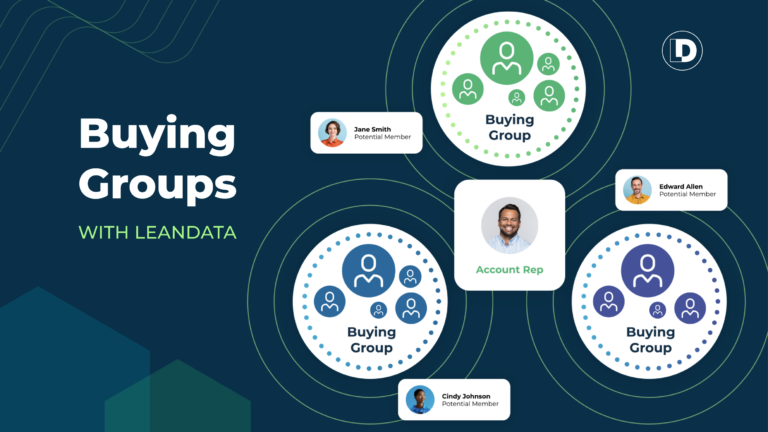Implementing and leveraging an account-based marketing (ABM) motion pays off with a larger, healthier sales pipeline, increased account engagement and bigger deals, closed more quickly. However, the path to success is fraught with a number of ABM hangups that can absolutely derail even the best-laid plans.
This post covers how to overcome four common challenges B2B revenue teams face when deploying an account-based strategy.
Align Sales & Marketing (and Customer Success!)
The first ABM hangup involves alignment. Because of its name, account-based marketing, ABM is often thought of internally as a marketing initiative. Nothing can be further from the truth.
ABM could be a marketing initiative, but if it is, it’s doomed to fail. To succeed, ABM must be a growth initiative, and it requires a concerted, collaborative effort between all the functions of the revenue team.
At a bare minimum, winning ABM requires the sales and marketing teams to work hand-in-hand. Additionally, in many ABM initiatives, the customer success team can also be a significant driver.
Initially, your revenue team will need to align to establish the goals for your ABM motion. And, no, “growth” is not enough. The more specific your team can be, the more success they’re likely to achieve. ABM goals might include one or more of the following:
- Introduce a new product, solution or service
- Break into new markets, industry verticals and/or segments
- Increase share in an established market
- Upsell/cross-sell a segment of your existing customer base
- Convert customers away from a particular competitor
Once aligned on goals, your revenue team then develops its key performance indicators (KPIs) and determines how measurement is performed. Define how the team will collect and measure engagement analytics across all outreach efforts, from both sales and marketing, including reach, paid media/advertising, and form/landing page conversions. Additional metrics might include influenced or sourced revenue attribution, as well as sales pipeline influence, pipeline velocity, conversion and closed/won opportunities.
With sales and marketing aligned from the beginning, you ensure the revenue team goes to market with consistent messaging and efficient lead and contact handoffs internally. Furthermore, you avoid having any data living in silos, and thereby are better equipped to deliver holistic, comprehensive views of accounts — an absolute necessity for an effective ABM motion.
Build a Right-Sized Target Account List
Selecting the right accounts for your ABM motion is a process that in time will determine the success of your motion. The single biggest problem identified in ABM after-action reviews is the selection of targeted accounts that either didn’t align with the overarching goals, or that were aspirational accounts where the organization had failed to gain traction previously.
Ensure your target accounts directly map to your ABM goals before leaping into tactical execution and wasting precious revenue team resources. Scour your target account list for suspect accounts, and use your best existing customer accounts to create an ideal customer profile (ICP) for a benchmark against which to compare your target accounts.
Additionally, take care to not select too many target accounts. The pressure to grow never ceases, but the last thing you want is to haphazardly push a huge number of target accounts into your ABM motion in a desperate attempt to close as many deals as possible.
With ABM initiatives being resource-intensive, what’s more likely to occur is that you’ll deliver a bundle of half-hearted campaigns that ultimately fall far short of your ambitious goals.
Personalize Customer Experiences at Every Touchpoint
Alongside the development of a list of target accounts to pursue, another hallmark of ABM initiatives is customized content. However, in this ABM hangup, marketers and sellers resort to using their previously created generic content intended for broad audiences.
Creating personalized experiences across all channels and touchpoints requires a content strategy pinned to your specific list of target accounts. Content should focus on specific pain points readily recognizable by the personas you’re reaching at a target account. And, don’t forget that different personas at the same account are likely to have very different pain points.
While your outreach into a target account involves many individuals, deliver your messaging in a one-to-one manner. Be certain your messaging addresses pain points with tangible solutions. Conduct A/B tests whenever possible to identify the language, messaging and solution set that engages and resonates most effectively. Engagement metrics prove vital to continuous improvement efforts with your ABM strategy.
Build Your Tech Stack for ABM Scalability
At its foundation, ABM is targeted and personalized. As such, it takes an enormous amount of revenue team resources. Free your team to focus on personalized messaging and content, account-specific campaigns, and ongoing performance analysis.
ABM hangup number four occurs when your revenue team buries itself in time-consuming and error-prone activities. This includes manual analyses and the requisite exporting, cleaning, compiling, verifying, importing, reporting and sharing of data.
Create an ABM platform that first provides an infrastructure for your aligned revenue team functions. They need to have accessibility and immediate visibility into all lead, contact and account data, as well as all metrics mapped to KPIs.
Then, build your stack to support your ability to engage with your prospects the way they want to be engaged with, on their terms. Include capabilities to personalize outreach based on personas, stages in the buyer journey, campaigns and more.
Explore opportunities to automate repetitive, manual tasks and processes. Your revenue team adds value when they actively market and sell, engaging with leads, contacts and accounts. They add much less value when they spend their precious time preparing and equipping themselves.
Avoid ABM Hangups to Spur Top-Line Revenue Growth
Your ABM initiative ultimately succeeds when your revenue team buys into a new paradigm of quality of contacts and accounts over quantity of leads.
Take care to align your functional teams. Then, establish common goals and performance metrics. Next, curate the right list of target accounts and approach content from a fresh and personalized perspective. Last, build the right tech stack of empowering technologies.
With that, your ABM initiative will be off and running toward success!











